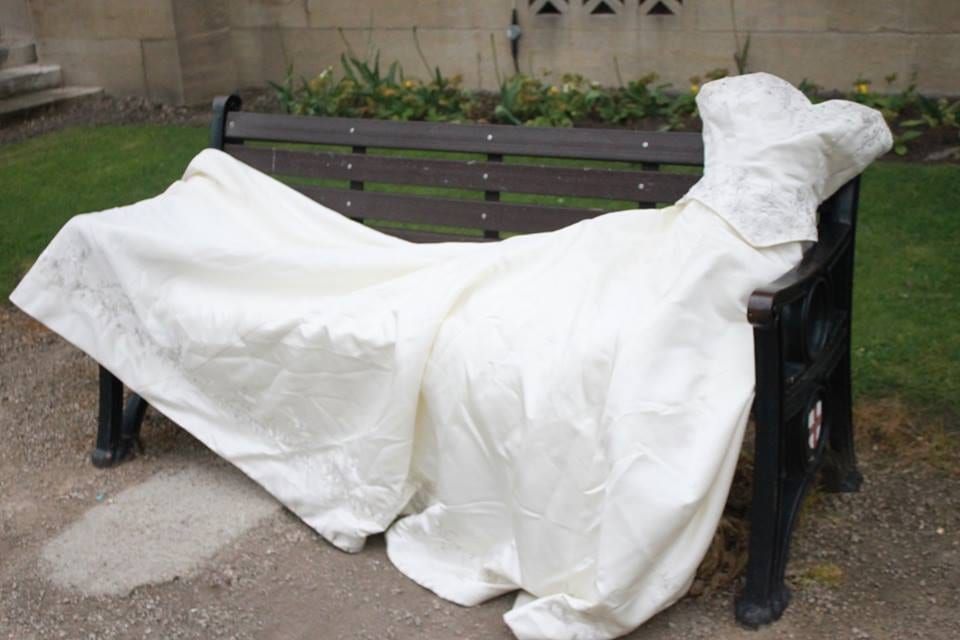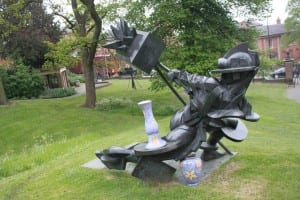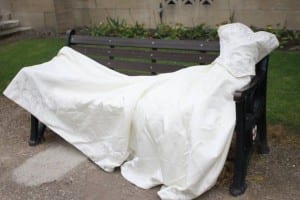First Impression of Usher
I have always been the type of person to ‘have collections’ or as I always saw it, ‘being obsessive’. I never considered it as a collection though. I always just saw it as me being obsessive. I didn’t, and still don’t think anyone else would be interested in what I have. Whereas James Ward Usher bequeathed his collections to the City of Lincoln.
Walking around it all just seemed very strange to me. Like I was looking into that part of someone’s mind that hides obsessions and all our secrets. Why did he collect pocket watches? What did it personally mean to him? What did the brooches, cuff links, cutlery mean? He spent his whole life collecting things. Going all around the world to find items to fulfill his collections. And we just observe them like they’re a beautiful painting or sculpture.
Does this mean he was just obsessed with completing his collections? Did he HAVE to complete them? Did he feel an undenying urge to collect? Did it drive him crazy to think of all his incomplete collections?
I didn’t really see the usher as a museum or a collection, I saw it as an insight into the mind of James Ward Usher himself.
I have collected snow globes, show tickets, books, DVD’s, things with moustaches on. But I have never felt the need to fulfill one of my collections. I don’t collect until it’s complete I just collect memories and what I love and enjoy. I couldn’t spend my life searching for these items and have it as what my life consists of.
I think that collections can be harmless, or can go full out obsessive. On the Usher website they state he “never married and devoted his life to collecting, travelling far in search of particular items to enhance his collection.”. His life and passion was collecting. He got into it right out of school and never did anything else. He also got famous through his obsessions and decorations with the Lincolnshire Imp.
His collections were beautiful and amazing. I no doubt think his life’s work is amazing, and some of them really caught my eye and interested me. Such as the picture above of Mark Woods ‘Never Leave Home Without It’, and all the grandfather clocks were fascinating.
In some light, Usher could be seen as a hoarder. The space felt cramped and crowded. It really made me feel weird. I felt like I could hit or knock anything at any point, but I also felt weird about it because it reminded me of hoarders. Having so much stuff that they have specific roots to follow to get to any part of their house. As Gail Steketee comments “a major feature of hoarding is the large amount of disorganized clutter that creates chaos in the home. Rooms can no longer be used as they were intended, moving through the home is challenging, exits are blocked, and life inside the home becomes difficult.” (2013). This is exactly how I felt within his house. It was no longer a home in my eyes, and I believe they didn’t have to move much around to make it ‘The Usher’ either. The collection is beautiful, and it has some beautiful pieces of history in there, but, I just felt like I saw more of James Usher in there than art.
The Start of our Process
Our initial idea started from the fact that the Gallery used to be a home. We took the idea of using the house as a house for the homeless instead of a place for art to be displayed. As Mike Pearson says “a places owes it’s character not only to the experiences it affords as sights, sounds etc. but also to what is done there…”. We planned to see how much money the Gallery got from donations, compared to the amount the Homeless would get.
However, after a feedback session with our lecturers we realised how this method of performance was just not possible within the time we had, and with the personal experience we had. It would take considerably longer than 8 weeks for us to get the knowledge and experience we needed for this type of performance.
So, we decided to look for new inspiration. We looked instead at the gallery, not the house itself. We thought of the idea behind galleries, and the rules and regulations you had to keep to within a gallery. When we were first given the site to perform in we were given a list of rules and regulations which, from what we had heard, other groups hadn’t had to deal with. We realised this was because of the site we had. It was a place were rules and regulations were kept to. Everything needed to be safe and protected. With this knowledge we decided to create an ‘anti-gallery’. We used the famous quote of ‘One man’s trash is another man’s treasure’ and decided to use lost and abandoned objects from the streets of Lincoln and present them in a gallery like setting. We want to take all these objects and make them look beautiful and extravagant. We want to add audio to our piece as we felt “immersive audio techniques that are often used in artistic sound disciplines offer complex multichannel solutions to enhance the listening environment for an audience” (Lauke 2010, pg1); We wanted to integrate text into our performance, we found a book called ‘The New York Trilogy’ By Paul Auster in which they mapped the city of New York; similar to what we were trying to do with our piece. So with this book we started to collect quotes we thought were relevant to our project.
Also, after the initial feedback session we decided to use the gardens of the gallery instead of the education suite or the museum itself; we would have a lot of damaged objects and we were worried about how much of a mess it could possibly leave the usher in, also we liked the idea of showing these items outside, where they were left, but shown beautifully around the outside of the Usher House.
With our ‘Anti-gallery’ idea we planned to have curators and performers out on ‘display’ and by having the objects laced around instead of on plinths and behind glass. We want people to be able to touch, hold and play with these items, exactly the opposite of what you would expect in a gallery. At this point, we had decided to do an exchange with the objects. So, we hoped throughout the day, if people want to exchange an object in our gallery for something they have that belongs to them, they will be more than welcome to.
When we started the idea, and started to decide exactly what it is we would be doing, I did think it would be a lot easier with five of us collecting items from the city of Lincoln. We started off in places close by to us all, finding a lot around the University and down the high street, towards Portland Street. However, once we started collecting, it did seem a lot more challenging than we all first anticipated. There wasn’t anything really up towards to cathedral, and with only one car between all five of us it was a challenge to collect bigger items. Once we had collected everything we needed from one part of town, we started to struggle to find stuff close by. We did still manage to find a lot of bulk items which, luckily, some of them were impressive enough on there own so, didn’t really need a lot more added but, some items were so small we were worried about where we would present them. So, we decided to try and collect as many of these smaller items as possible. We found as many shoes and umbrellas as we could get our hands on! One of these on there own wasn’t very impressive, but the amount we ended up being able to get our hands on was amazing! (We ended up with over 20 umbrellas and over 40 shoes).
We decided to map the city of Lincoln with the ‘rubbish’ we had collected. Once we had collected all the items we marked them all on a map of Lincoln. We found the word ‘Time’ in several places throughout the map, which we felt fit very well within the ideas and performances we had for our piece. Some of our objects had been lost through time, with them being too old to use any more, or them being too outdated, or no longer a necessity. Also, some of the objects had been abandoned for so long that they had nature growing in and around them. We also felt this word connected with our performance because we had decided at this point that our piece would be durational, lasting the whole day that the gallery was open. This made us feel that time was a very relevant word and quote for us to use.
It took us a while to finalised our performance aspects of the piece. We felt our piece needed a performance aspect, and as Susan Bennett states‘… theatres and museums have increasingly become symbolic and actual neighbours, sharing the task of providing entertaining and educational experiences that draw people to a district, a city, a region, and even a nation’(2013 p. 3), so mixing the two felt very natural.
We all performed separately throughout the garden, amongst the items we had found. Michael was sat with all the items of clothing and categorising them into colour, item and size. Rachel was sat with a big elephant teddy bear we found, hugging it and offering people to come and hug the elephant with her, to represent the loss of childhood and our desire for it to return. Sam was in a wedding dress hugging a tree. This represented the other wedding dress that will be empty and alone, on the wooden bench. The will juxtapose each other with Sam hugging the natural material the bench is made of, and the emptiness of the found wedding dress. Steph will be at the start of the gallery, introducing and inviting people in to see the gallery. Offering people umbrellas, maps and mp3’s/headphones and answering any questions anyone might have. I was walking up and down the stairs with no shoes on amongst the shoes, representing the ware and tear we go through daily, and walking in other peoples shoes, wanting to follow in peoples footsteps and follow on. I invited people to join me in walking up and down the stairs and to walk amongst the shoes. People reacted very differently to this, children walked carefully at first then ran up as quick as they could, some adults assisted me up and down the stairs to help keep my balance, others followed exactly in my footsteps and some just walked along side me. Once we decided where all the items would go we decided to hang the umbrellas from a tree with string if possible, and we started to categorise things together. All electronics going together, children’s toys going together, vehicle parts, shoes, clothes etc. All bunched together.
At our technical/dress run. We unfortunately didn’t do it in costume because some of the items we planned to wear were not with us; we also planned to wear some of the found objects and thought the might not work for both performances and might loose some of their ‘look’ if we wore them for our dress and performance. We had planned to wear damaged or found clothes from our collection, however, after our dress run we were advised to wear smart clothes (other than Sam) instead to represent the ‘curators’ we were playing, which was the idea we originally had for costume. After the run we luckily didn’t have to change too much, just the odd bit here are there with our audio, maps and items, but luckily nothing too drastic.
Performance & Evaluation
On our final performance we did come across a few struggles to start with. We had always considered the weather and rain. We ended up hoping for rain because we felt it would add to all our objects we had collected and would add the brokenness of them. However, we hadn’t really thought about really strong winds. Wind had been mentioned, but for weeks it hadn’t been that strong, so, our main focus was the rain. However, on the actual day of our performance, we had the strongest wind in Lincoln I had seen in a while.
We tried our hardest to weigh things down with stuff we had to hand, after a few minutes of trying, we did manage to strap everything down, however throughout the day we had vinyl’s, bags and the wedding dress blowing all over the place. However, it also added a lot to the few object around. We had video tape blowing in the wind. A few children were playing with them and it was great to see people seeing these broken objects in a beautiful light.
We had a lot more people walking around than we had expected. Quiet a few families just walked around without talking to Steph. One family came up to me and asked me why we were doing this? After explaining they said how beautiful everything looked, and how it really made them look at the items in a completely different light, and also they were shocked that we planned for the piece to be performed all day. We had several people come up to a few of us saying how they thought it was sad to see so many beautiful things neglected.
All of our performance aspects, we found more demanding than we had expected. All of us doing one repetitive movement, or staying very still was very very challenging. I had watched several performances by Marina Abramović and thought what she did was challenging, but watching and doing are two very very different things. You really don’t understand the limitations you have until it’s put into practice.
We did all manage to keep going, but personally, I found it a lot harder than I had anticipated, especially been shoeless when it started to rain. During my performance I asked people to pass me there hand and to walk the shoes/stairs with me. Some people assisted me with walking, whereas others followed my exact steps. It was interesting to see how people reacted differently to the say gesture I handed them. People reacted very differently to this, children walked carefully at first then ran up as quick as they could, some adults assisted me up and down the stairs to help keep my balance, others followed exactly in my footsteps and some just walked along side me.
We also had one gentleman sit amongst the items. He firstly sat behind on of the benches, almost out of sight. But then he sat amongst our musical items, and then next to the wedding dress. Once this man sat down, we started to have other people interact with the items, seeing these regarded items being interacted with was fantastic. People saw these items in a different light.
As stated above, the weather was a bit of a problem, we ended up getting heavy bouts of rain throughout the day, drenching all of us. We were supposed to do an ‘exchange’ and the end of the day, but unfortunately, because of the weather, we couldn’t actually do this part of the performance.
In hindsight, if we had to perform again, I would definitely consider every possible situation the weather could put us in and just be prepared for what could happen. I would also would have practised several times, the perofrmance aspect, so I would know what I would physically be capable of.
Work Cited:
Bennett, Susan (2013) Theatre and Museums, Basingstoke: Palgrave Macmillan.
Lauke, Karen (2010) ‘The placement of sound in artistic contexts’ Body, Space & Technology, 9(1) 1-10
Pearson, Mike (2010) Site-Specific Performance, Palgrave Macmillan
Steketee, G. Diagnosing Hoarding. Available from: <http://www.ocfoundation.org/hoarding/diagnosing.aspx> [Accessed 9th February 2014].
The History Of the Usher Gallery. Available from: <http://www.thecollectionmuseum.com/?/about-us/history-of-the-usher-gallery> [Accessed 9th February 2014].




